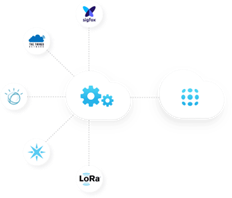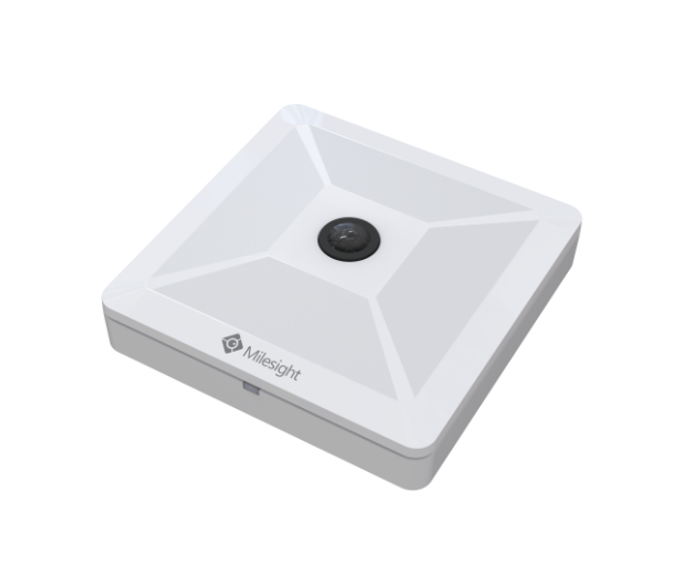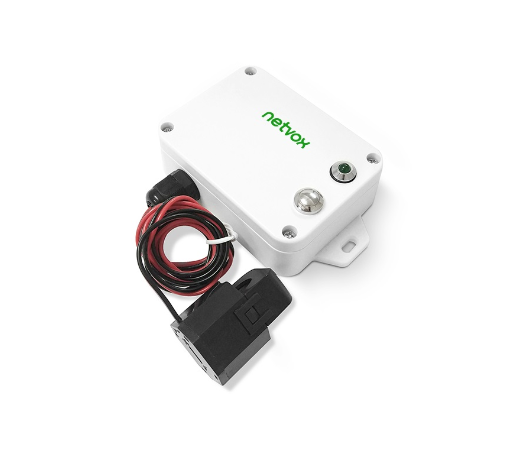Energy Monitoring
Current CT Monitoring Clamps
Live Energy Dashboard Visualisation
Secondary Monitoring of Electrical Circuits
A Non-Invasive Approach
Why do we want to do this?
Most electricity supplies for buildings are metered at the point of entry to the building, or on the incoming mains before distribution to various internal circuits via the distribution board. Although this correctly captures the total energy used, it doesn’t give any real-time data on how and at what we are consuming this, and by which devices. With the sudden and unexpected rise in electricity costs in 2022, consumers are looking to change behaviour in a way that can help reduce costs.

What is our solution to this challenge?
At Hubit, we offer a range of current CT clamps that can suit varying ranges of currents up to three-phase 1,000-amp circuits. Sizing the correct clamp can help improve accuracy as if the cable is not centred, data variations can creep in. These can be installed at the exit points from the distribution boards for the various circuits you want to measure. Care needs to be taken when clamping the live wires on single and triple phased circuits. Once the cables are clamped, the step is to understand how do you get this data to your endpoint? We use several technologies for the transmission of this information, our favoured approach is to use battery powered devices that sample current periodically and then upload to our cloud platform. These devices can also be configured to upload on a predetermined time interval with the addition of a percentage change of current which can be defined on configuration.

There are a number of varying wireless transmission technologies that can be deployed such Zigbee, WiFi, RF, EnOcean, however our preference in to use LoRaWAN. LoRaWAN has a real advantage in the fact that it operates at a low frequency (868 MHz in the UK) and has the capability of transmitting over a long range, theoretically up to several kilometres. This, however, is very dependent on the density of objects in its path. Using the LoRa standard for communication provides us with a defined standard for communication between the sensors and the gateway receiving the information.
In most instances these sensors use batteries which are high-capacity Lithium Thionyl Chloride cells. We can expect to see battery life of years following a deployment. Within the LoRa transmission standard, battery levels are transmitted as part of the payload and alerts can be set up to give a low battery warning.
A big advantage of LoRa is that once you have invested in the gateway, you have access to a large range of alternative devices that can help inform and manage your building. These include and not limited to parking space & utilisation, pest control, environmental, space and occupancy and facilities. Hubit’s gateway collects the information from the various sensors and passes it onto our cloud platform.
We configure our gateway as a private deployment, where only paired sensors will pass their information on. Any other LoRa device will be ignored if it is not paired with the gateway.
Hubit has developed an onboarding portal to help with the mass configuration and management of this process. This platform helps manage the unique keys and ID’s that are required for the device configuration on the gateway to get your information to the correct place.

How can we analyse the results?
Hubit has teamed up with Ubidots to provide end to end solutions for customers wanting to leverage on the vast range of existing & new sensors that can add value and insight into people’s day to day lives and businesses. Hubit simplifies the process of technology choice and importantly the communication layer, looking at the implementation and visualisation of the data that comes from such deployments.
We build private networks that allow you to monitor and control the environment around you also focusing on need-to-know data, and when it becomes important to you.
At the heart of all our work is security, our software is hosted in the UK, within an AWS environment and we benefit from their high availability and stringent security.
We offer several services where we can provide you with a fully managed service where your portal becomes a sub domain of ours; in this instance, we help you with setting up security levels and permissions, so your deployment is completely segmented. The powerful white labelling within Ubidots allows solely your data to be viewed via web or mobile, and without reference to us or Ubidots with tailored user permissions.

On a second level we are more than happy that you leverage on the rich tools available within the platform so you can design and build you own dashboards and applications. This could be in the form of a separate dedicated implementation within AWS UK or another server environment of your choice.
This data can be merged, extrapolated, and intelligently analysed by Ubidots to give the user an accurate insight as to how their measurables are performing. This data can then be issued via a scheduled report and viewed on a dashboard

EnOcean is another standard similar to LoRa, it has the advantage in which it harvests energy for the wireless data transmission where possible from the environment. In the case of energy monitoring, the energy is harvested from the inductive field produced by current passing via the live cable when the current clamp is attached, which in turn, creates power for the sensor to operate and transmit data.
The operating frequency of EnOcean is similar to that of LoRa, however, the transmission power is typically a lot lower, therefore the transmit range is not as far. There are less providers making EnOcean sensors, so the ecosystem, for example in building management means less choice and range is available.
How can Hubit Help you?
Via various partnerships, Hubit are able to provide a full suite of tools to help with the install and onboarding process for the devices in the field. We concentrate on the technology and how they can be interfaced with multiple manufacturer’s sensors and systems in to one seamless integration at scale. We can help you with the decision and purchasing of sensors, gateways and the process of getting your data to where you need it to go.

What is the difference between monitoring and metering, can we improve the accuracy of our solution?
To provide full live metering across multiple circuits we need the following: actual supply voltage and more power for the sensors to communicate and compute in real time then send the desired data to the gateway.
To correctly meter your supply, the current and voltage needs to be captured at a granular level; to capture the voltage, we need to wire directly into the voltage of the circuits we wish to measure and have an updated device that can calculate power in real time. This is achievable; however, this will need to be installed by an electrician. Regarding the ‘more power’ situation, this can be achieved by wiring directly into the live voltage as mentioned, or by providing a sensor that is mains powered.






